Calloway Here We Come!

We stopped at Ruby's for a snack!

James like the choo-choos

Neat arrangement on the ceiling

"OK, I am ready!"

Check-in... Using a computer!
Here We Go!
Did You Know? - The curved path of a golf ball known as slice or hook is due largely to the ball's spinning motion (about its vertical axis) and the Magnus effect, causing a horizontal force that moves the ball from a straight-line in its trajectory.
Back-spin (upper surface rotating backwards from the direction of movement) on a golf ball causes a vertical force that counteracts the force of gravity slightly, and enables the ball to remain airborne a little longer than it would were the ball not spinning: this allows the ball to travel farther than a non-spinning (about its horizontal axis) ball.

No... I am NOT taking a whizz.... It's the end of my swing!
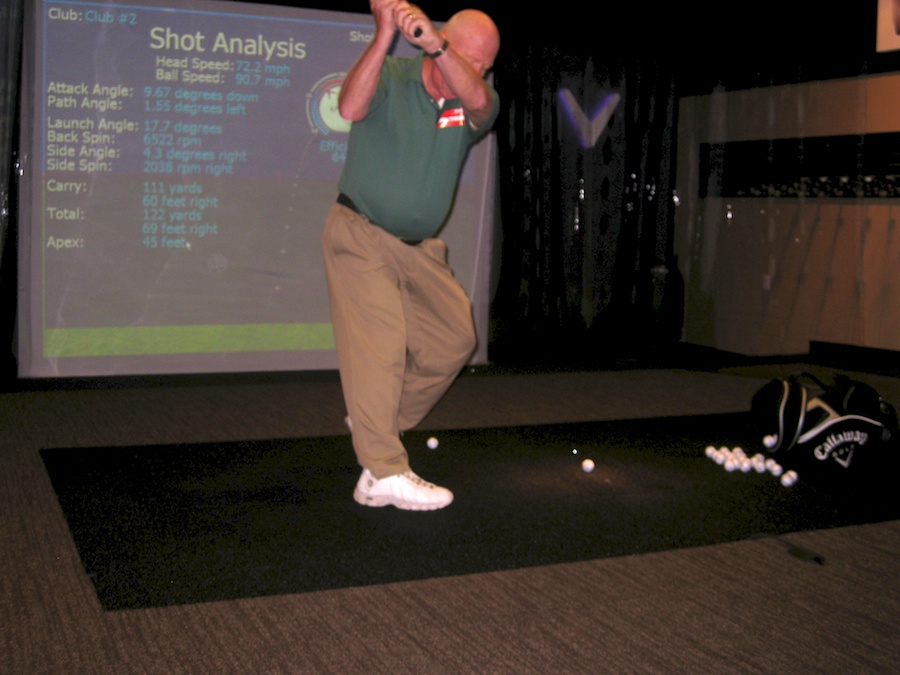
The tummy and club goes in opposite directions

Carefully lining things up
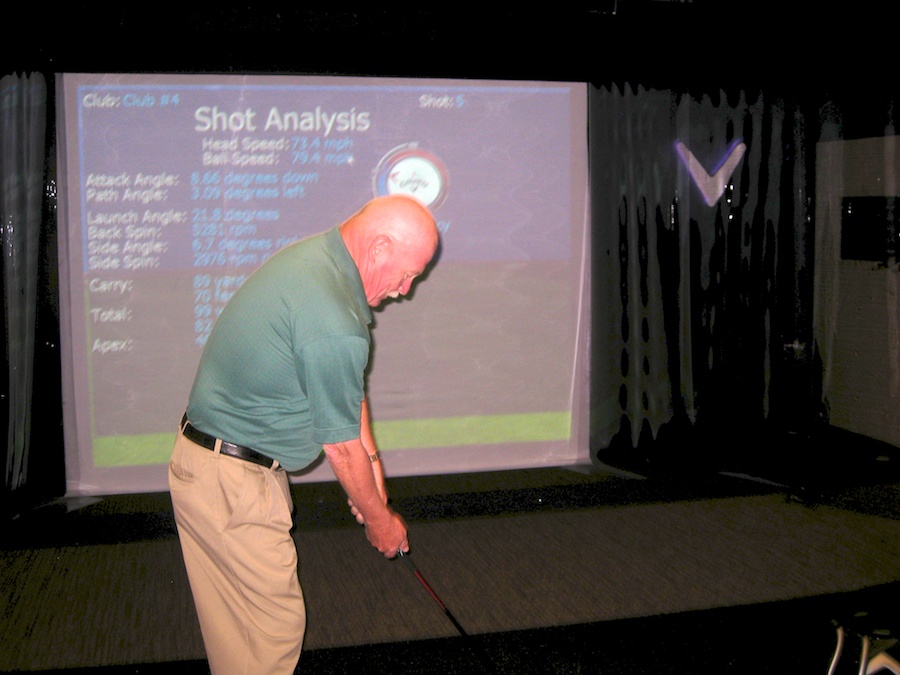
Ready... Set.... Go!

"Put the camera down James!"
Did You Know? - The shaft flex is the indication of how much swing force is necessary to make the shaft perform properly. If the shaft is too stiff, the player will have difficulty flexing it during the swing. This may result in reduced distance and shots going to the right. If the shaft is too flexible, the player may have difficulty controlling the club head. This may result in either sliced or hooked shots. Correct shaft flex is primarily determined by the club head speed generated by the player. As a general rule the following applies.

Look out wall, here it comes
Changing the length of the club has three major effects:
-
Increasing or decreasing the shaft length changes the length of the swing arc, just as changing the radius of circle changes its circumference. As long as a player swings at the same tempo and is strong enough to handle a longer club, a longer shaft will give more club head speed and distance.
-
Changing shaft length changes the plane of the golfer's swing. The golf swing takes place on a plane formed by the golfer's shoulders and the ball at address. When a longer golf club is used, the golfer must stand further from the ball. Thus the plane is "flatter," or closer to horizontal. When a shorter club is used the golfer must stand closer to the ball and the plane is more "upright" or vertical. Generally an upright swing is more accurate since the club face is aligned with the target for a longer time in the swing. A flatter swing, However is more powerful for many players.
- The longer shaft changes the position of the club head at impact. Because the golfer is standing further from the ball. The heal of the club head will move downward and the toe will move upward.
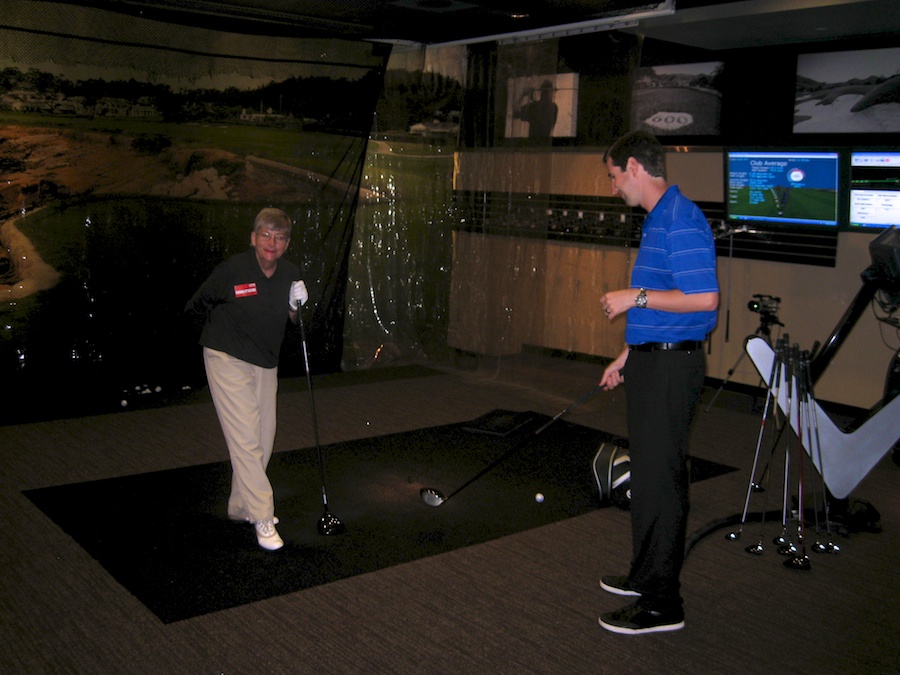
Grandma is just finishing
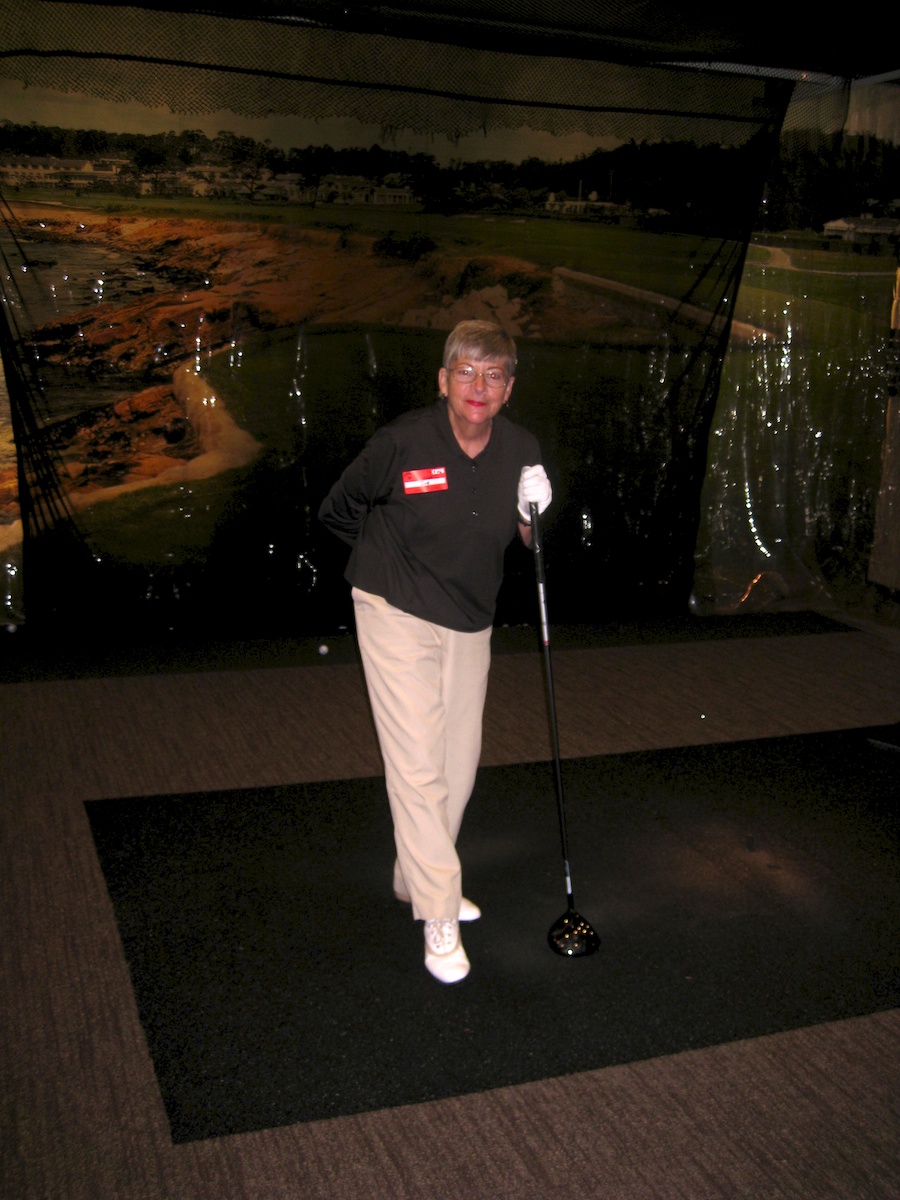
She is happy

James is just a blur

Swoosh!
Did You Know? - The lie angle of a club is the angle formed by the sole of the club and the shaft. This angle effects the position of the club head at address and at impact. Proper lie will cause the center of the club head to strike the ground rather than the heel or toe.
A club which is too upright for the golfer will hit the ground with the heel. This will tend to cause a pull or hook because the face tends to close through the hitting area and because the face is actually aiming to the left (for right-handed players.)
A club which is too flat will hit the ground with the toe. This generally causes push or slice since the face will open and is already aiming right (for right-handed players.) Clubs that are too upright or to flat also cause decreased distance since the twisting of the club head at impact absorbs energy.
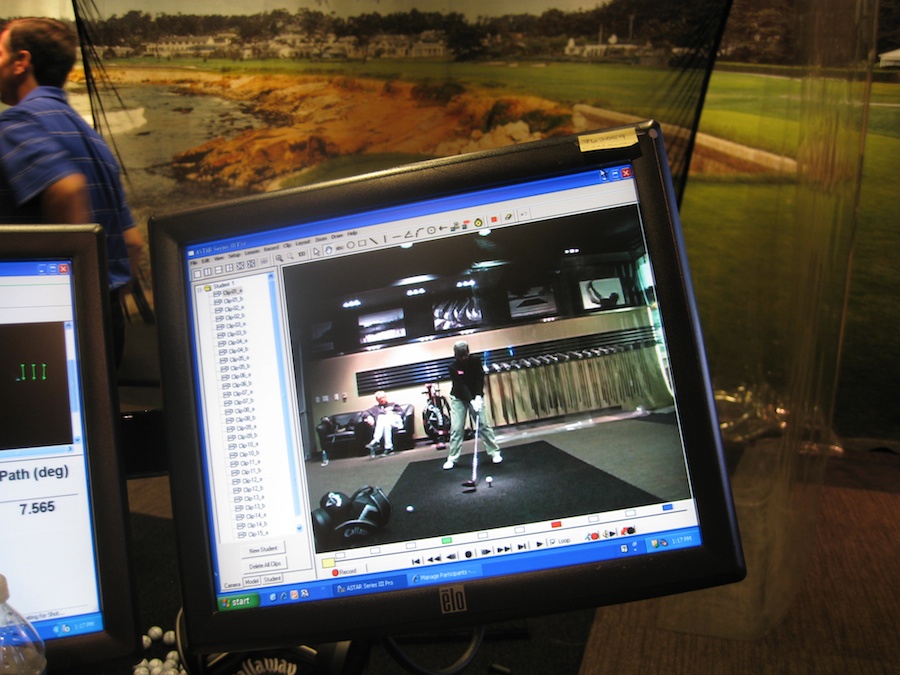
Video's catch everything!
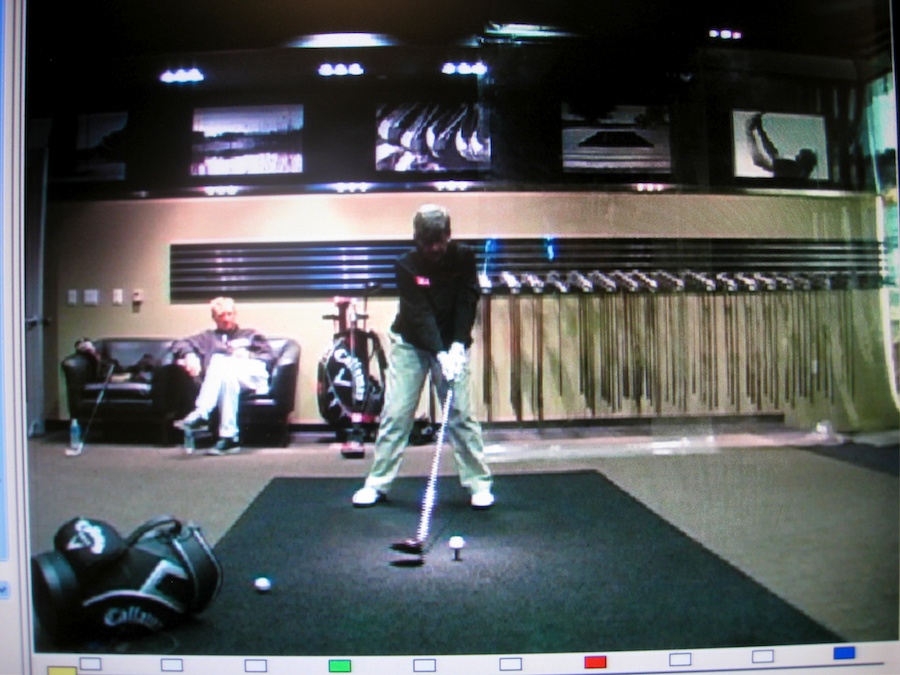
The ball is leaving the building
The loft of a golf club is the angle formed by the face of the club and the shaft. The loft effects the trajectory the golf ball will travel after impact and the distance the ball will carry. In irons and fairway woods the loft is usually a matter of club design. In the driver, however the loft must fit the golfer's swing.
Three factors determine optimal loft for a driver:
- Club head speed: The greater the club head speed the more backspin is imparted to the ball and less loft is required for best trajectory.
- Swing consistency: decreasing loft also increases the side spin associated with impact with the face open or closed. It is there fore harder to control a low-lofted driver.
- The material and design of the head also effect optimal loft. It is therefore incorrect to assume that if a given loft is right in one model that it will be right in another. For instance, it is common for golfers to require 1 to 2 degrees less loft with the new titanium drivers.
Due to variations in individuals swings, the face may have more or less loft at impact than when the club is held in a neutral position at address. Thus finding the best loft necessarily requires some trial and error.

Not too bad
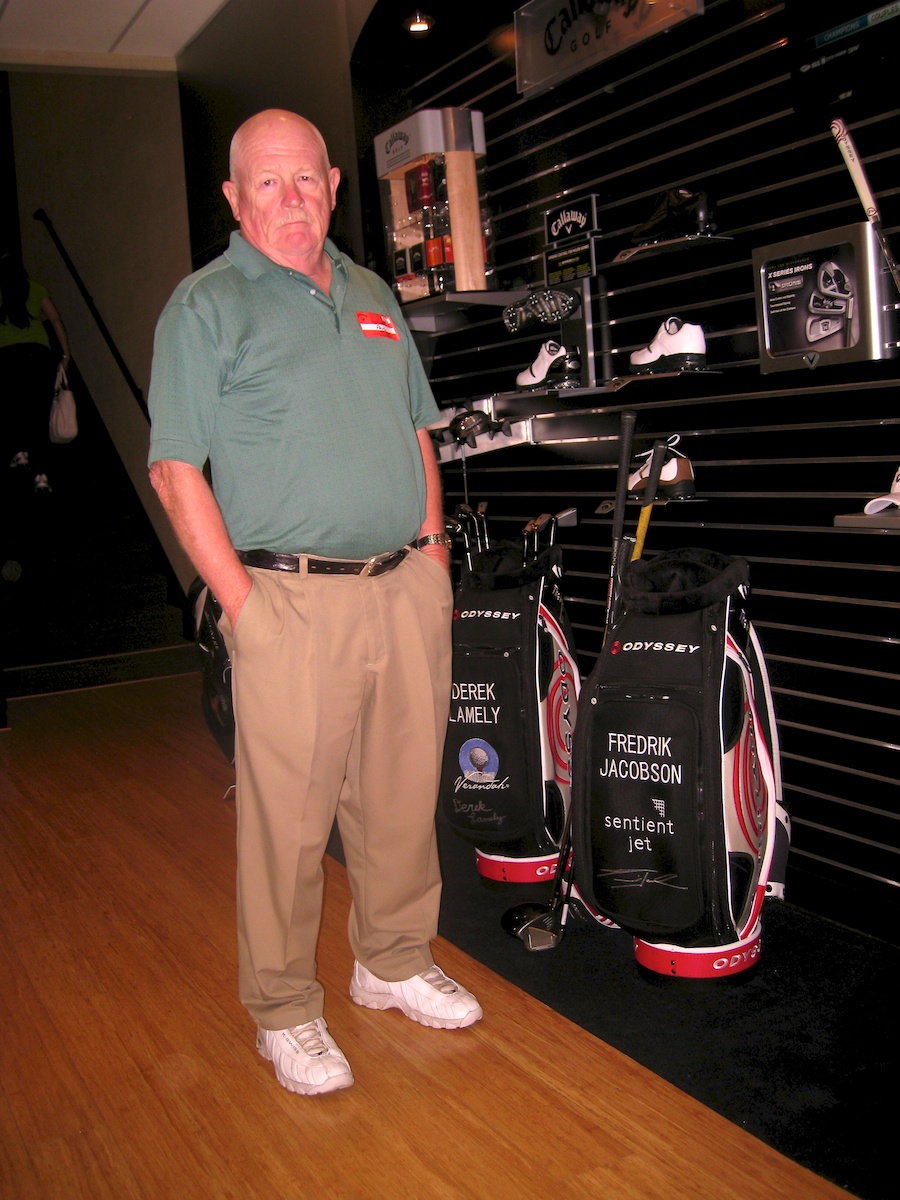
Looks happy... The fitting must have been good

Waiting our statistics... James got locked out!